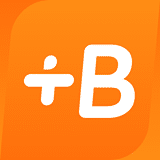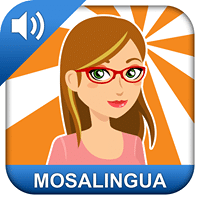
The 9 Best Online Language Labs in 2024
What comes to mind when you hear “language laboratory?”
Hint: It doesn’t have microscopes, Bunsen burners or graduated cylinders.
It’s not cooking up a new, strange language like a multilingual Dr. Frankenstein working on some linguistic monster.
So what is a language lab, and what sort of experiments take place inside? Also, what’s the best language lab software for you if you’re on the lookout for one?
Read on and find out.
Contents
Download: This blog post is available as a convenient and portable PDF that you can take anywhere. Click here to get a copy. (Download)
What Is a Language Laboratory?
A language laboratory is traditionally a facility—usually a room in a school—where students use technology to learn a new language. It’s said that the language lab was made possible by Thomas Edison’s invention of the phonograph in 1877, which allowed the recording and reproduction of sounds. The University of Grenoble’s language learning facility, established in 1908, is considered one of the very first.
The language lab has always reflected the technology and thinking of its time. So, in the 1960s, when analog cassette tapes were all the rage, students donned headsets and endlessly replayed recordings of native speakers pronouncing words, phrases, sentences and even entire dialogues.
This Audio-lingual Method was the preferred wisdom at that time. It postulated that language can be learned in specific discrete units and, to master a language, one has to do countless repetitive oral drills. And so the language lab became a hub for those familiar “Listen and Repeat” schemes.
The conventional language lab’s heyday lasted from the 1960s up until the early 1970s, with 5000 labs in existence in the United States alone.
But when the Audio-lingual Method began to fall out of favor in the late 70s, the perceived importance of language labs also took a hit.
The Language Lab Renaissance would come in the 1980s. With the increasing popularity of the computer, new possibilities were made available to language students. The computer was more versatile as a language learning tool and soon, video and software added more layers to the learning experience.
The development of the World Wide Web skyrocketed things and the explosion of apps, interactive programs and digitalized material meant that information was not only democratized, but it was also practically made limitless. The language lab has truly come a long way from the cassette tapes of old.
Today’s tablets and smartphones are slowly blurring the definition of a language lab as just one room in a university or school. Instead of walking into a language laboratory, students are taking the whole lab with them wherever they go.
This virtual version of the language lab room has not only increased in power, with capabilities not even dreamed of a generation ago, but it has also decreased in size so much you can even tuck it under your pillow.
Not to mention, this language lab room has become even more social, because students are having real-time chats and discussions in the virtual world, as opposed to sitting isolated with a headset on.
So what does it mean to “build” a language lab?
It means downloading the right apps to create a space for learning. Although the original definition of a language lab as a “room” has changed, the part where it says that technology should be used for language learning has not.
Without further ado, let’s dive into the best language lab software you can get your hands on.
The 9 Best Online Language Labs in 2023
1. Babbel
Let’s start with the 2013 winner of Microsoft’s “Innovate 4 Society Award,” Babbel.
The app will take students through interactive courses that teach grammar and vocabulary through interactive games, tongue twisters, dialogues, songs and sayings. Individual lessons can be completed in 15 minutes.
Babbel helps build basic conversational skills with its pronunciation section, where voices can be recorded and compared with that of a native speaker. There are also listening exercises where a dialogue is set up and missing words must be supplied.
Babbel is perfect for beginners who want to dive into their target language (e.g., French) as well as intermediate learners who need a refresher on their past learning.
2. FluentU
FluentU was created to make it possible for any learner to learn a language with authentic videos.
It does this by pairing every video with interactive dual-language subtitles. By hovering the cursor over a word, students can see an in-context definition, the grammar info of that specific use of the word and an associated image. When the word is clicked, the user will see more information like example sentences, audio pronunciations and clips from other videos where the word appears.
Vocabulary can be saved as multimedia flashcards, allowing the creation of word lists. Learners can then review saved words with personalized quizzes that utilize spaced repetition to boost memorization. Plus, the quiz questions can be completed via writing or voice input, making speaking practice possible.
3. Memrise
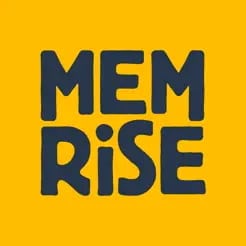
A vocabulary lesson, for example, would give a variety of tasks and tests that ultimately embed the words into long-term memory.
What you have with Memrise are rich, engaging media resources (audio, video, animations) and multiple game modes (Visual Learning, Review & Strengthen, Rapid Recall) that target different linguistic skills. All these are geared to not only boost learning but also ensure that students never forget what has been learned.
4. Duolingo
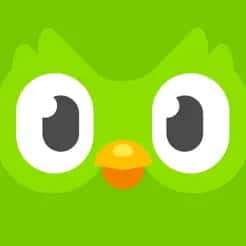
For example, let’s say it wants to teach the phrase el niño (the boy). At first, the quiz will come in the form of a straightforward multiple-choice test.
Then they’ll switch it up and ask to choose the correct English translation for the Spanish word. Then they’ll give fill-in-the-blanks tasks. Next, the phrase will be spoken, and the listener has to type the words into a box. All this time, a cute picture corresponding to the phrase being learned will show up (in this case, a cute picture of a boy).
But this is no cookie-cutter tool. Not everybody gets the same series of tasks because it will all depend on how the user performs. Duolingo’s algorithm rates the learner’s progress to determine how to serve them best.
5. MosaLingua
MosaLingua is a language learning program that uses cognitive science to try to speed up the learning process.
MosaLingua focuses on the most useful, common words and introduces them slowly to aid retention. Thousands of flashcards cover useful vocabulary on topics like transportation, shopping and more. There are also dialogues that show these vocabulary words in real-world contexts.
MosaLingua focuses on engaging visual and audio memory to maximize learning. Plus, the program is adaptable, adjusting to students’ needs by focusing more on things they struggled with. Additionally, MosaLingua can be used at any time, even if that means a couple of minutes at a time.
6. Mango Languages
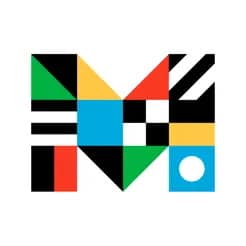
Sentences are introduced, then broken down into component parts and put back together to show how the words work with each other. This method also helps learners construct their own sentences rather than focusing on memorized phrases.
One of Mango Languages’ most unique and exciting features is its voice recorder. This voice recorder allows learners to compare speech side-by-side to that of a native speaker, helping to perfect pronunciation. Additional activities feature reading, listening and speaking.
Mango Languages offers the standard options including Spanish, French, German, Chinese and Japanese, along with less common ones like Norwegian, Serbian, Azerbaijani, Cherokee and many others.
7. Orell Digital Language Lab
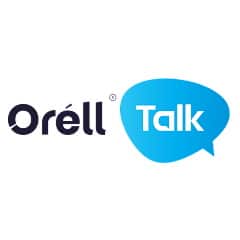
The developers seem to believe that this is the most effective way to learn languages because it’s the order in which we learned our first tongues. When we learned our first languages, we weren’t writing words or reading grammar textbooks early on—we were listening and babbling.
Orell follows up on this philosophy by providing plenty of pre-recorded native speaker voice, accent and pronunciation training. The student’s job is to listen, hone their ears to the target language and become familiar with its rhymes and rhythms. After listening, they are to pronounce and mimic what a native speaker sounds like. There is a voice recording feature that allows students to listen and modify their own vocal work.
8. SmartClass+ by Robotel

SmartClass+ cuts through all the trouble by using A.I. that can “listen” to student pronunciations and quickly determine how close they are to being accurate. This time, students can know how they’re doing and make adjustments without all the inherent biases of self-assessment. Educators, for their part, can quickly scan how students are faring by looking at the automatic assessments provided by speech recognition technology.
SmartClass+ is also able to run on any device—iPads, smartphones, laptops— and not just the computer terminals of a school’s language lab. Because the program can be safely hosted on the cloud, students can continue working on the target language on their own wherever they are. Educators can send them off with assignments and homework that the students can submit outside class schedules.
9. Schoolshape
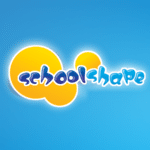
Students are placed in context and input-rich situations where they would have to use the target language to accomplish a task—like introducing themselves to a stranger, asking for directions or ordering food at a restaurant.
The different activities in Schoolshape—whether they’re about listening, speaking, reading or writing—are geared towards a communicative mindset. You don’t have empty drills of phrases or sentences that learners will never encounter in life like “The green cat jumped over the pink elephant.” All activities are purposeful and experiential.
The system also has a full range of assessment tools including drag-n-drop exercises, multiple choice, fill-in-the-blanks and even essays. If you’re an educator, you can make use of the “Worksheet designer” where you can spiff up those activities you broadcast to the whole class.
Check out the nine apps presented here, take them for a spin and then invest time in them. Soon enough, you’ll be amazed at what technology can do for you—whether you’re a solo language learner or an educator looking to ramp up student engagement.
Download: This blog post is available as a convenient and portable PDF that you can take anywhere. Click here to get a copy. (Download)
